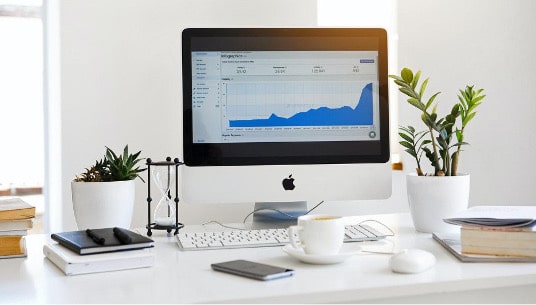
Entrepreneurs who’ve gone through the process of setting up their business often neglect finances. Sure, startups will pay attention to their profits, but maintaining and scaling can only be done with expert preparedness. A financial dashboard can put your sales, marketing, and financial performance front and center, so you can predict your budget with ease.
What is a Financial Dashboard?
A financial dashboard can provide deeper insight into core KPIs (key performance indicators) that are necessary for scaling your business. A well-built financial dashboard can improve your bottom line by combining budgetary information in one place without the need for spreadsheets.
Sale cycles, customer acquisition cost, and revenue retention are just a few metric examples a financial dashboard should have. The included KPIs will run against financial performance metrics, like gross margins and operating income, to produce a picture of your spending habits.
The Top 7 Reasons Startups Should Use Financial Dashboards
1. Saves Time (and Money)
Entrepreneurs tend to do everything themselves, especially when they start. However, once you have a bit of capital, you should start hiring employees or use automation software to save time on tedious tasks. Searching through multiple platforms for individual KPIs is a major time suck, but with a program that syncs all of your platforms, you can view all of your metrics in one place.
2. Custom Reports in One Place
As mentioned, going to individual platforms to calculate your KPIs wastes your time. After viewing your metrics, you need to place them in a spreadsheet yourself and calculate how much you made across all profiles. This process can get annoying very fast. Use a financial dashboard instead to customize your reports and automate your budget calculations.
3. Improves Profitability
Computers have increased profitability across all sectors, and your business is no different. Customers also expect you to be fast, or they won’t feel their needs are met. A financial dashboard can keep you on your toes, so you can adjust spending accordingly. For example, if customers aren’t buying a costly item, you can funnel money into marketing those products.
4. Monitor Sales Figures
With a financial dashboard, you never have to guess what your sales numbers are. This software can also subtract metrics, like taxes, marketing, and labor, to show you how much you’ll make per sale. As you monitor your sales, you may notice you can reduce money spent in some areas or increase the cost of an item to make more profitable products or services.
5. Removes Decision Fatigue
Business owners have to make many decisions throughout their workday. When it comes to finances, you may struggle to make a decision out of fear it will affect your bottom line. A financial dashboard can help you simplify your choices because the software stays up-to-date with your sales figures. In the end, a dashboard can help reduce your stress and anxiety.
6. Creates Accountable and Motivated Teams
Your team members want to see your business succeed, but they’ll have a hard time taking steps to improve your company without viewable metrics. After deciding what metrics you want to share with the team, you can set department-specific goals to motivate them to do great work. Dashboards will also let team members know where they may need extra training.
7. Fosters Equality in the Workplace
Even small teams can have communication issues, but a financial dashboard can remove these barriers. A dashboard can put management and employees on the same page by showing how specific numbers can actually improve finances in other areas. Sometimes it’s hard for different minds to meet on common ground, but a financial dashboard can provide equality and solidarity.
How to Successfully Implement a Financial Dashboard
Knowing why is half the battle, you also need to know how to implement a dashboard that works for your company. Follow these tips to ensure you keep up with your finances with a dashboard.
- Prioritize simple dashboards that are easy to maintain overusing complicated displays.
- Have a trial period for your financial dashboard to find the best system for you.
- Hire or find a team that can narrow down essential metrics you need to track.
- Create goals that are attainable and tangible to monitor your company’s performance.
- Attach your metrics to specific people or departments to determine individual success.
It’s important for your company to eliminate roadblocks that prevent you from using a financial dashboard regularly, or you risk dropping the software and reducing your profit margins.


































